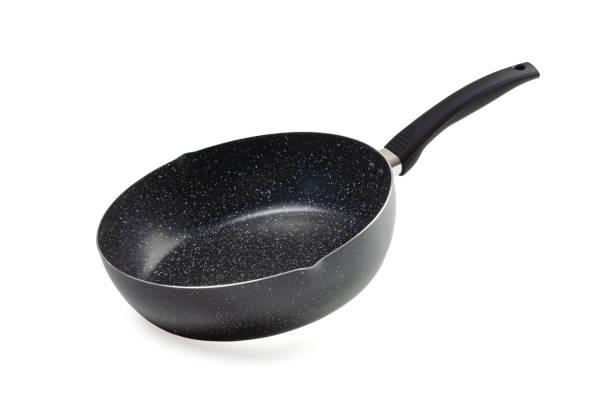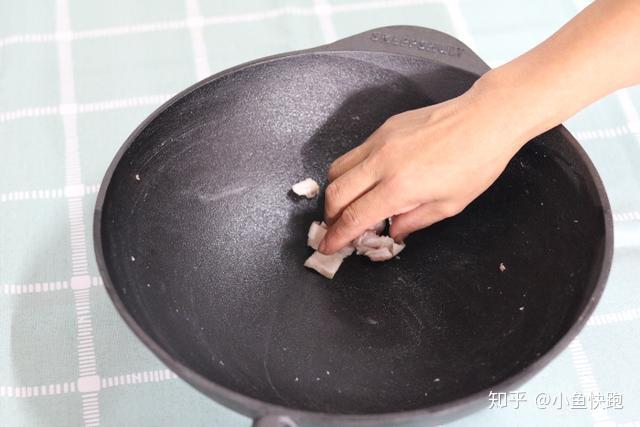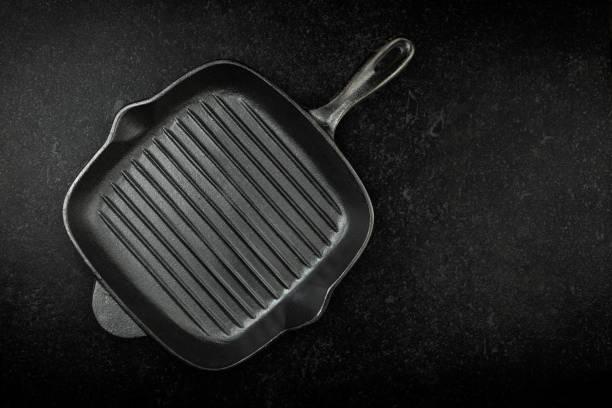Let's face it: grilling isn't as simple as they make it in the movies: you put a steak on the fire
and you sit there with a beer in your hand, doing nothing.
Between preparing the meat, lighting the fire, and making sure that the heat level is adequate and homogeneous throughout
the cooking area, expertly and correctly grilling a steak is certainly no child's play.
Although it may seem like a trend of the moment, there are kitchen utensils that can help even less experienced grillers cook succulent steaks and crunchy vegetables.
Among all of them, the non-stick cast iron frying pan has assumed great importance in recent years.
What is a cast iron skillet?
This particular type of pan is made up of an iron and carbon alloy which makes it very versatile in the kitchen since it can be used for cooking in the oven, on the gas stove, on the induction stove, and even on the barbecue.
Being composed of an insulating alloy, this type of cookware helps to enhance the flavor of various foods, the characteristic that differentiates them is the ability to accumulate and retain heat, subsequently spreading it evenly regardless of the hob.
It is possible to switch off the stove in advance and finish cooking the food with the heat off.
This makes it the ideal tool for those preparations that require long cooking such as braised meats, soups, stews, and roasts.
What makes cast iron so wonderful, almost magical as a kitchen material is the " conditioning " also called " seasoning ".
The conditioning of cast iron pans, but it applies to any cast iron kitchen utensil, simply consists of a long cooking phase of the same after having been smeared with animal fat or simply covered with a thin layer of vegetable oil. This operation is essential for the correct use and duration of the pans.

Over time and cooking, the more oil will be used and the more the walls will impregnate going to form
a sort of patina that will give smoothness to the walls and make them naturally non-stick.
How to condition cast iron pans
If you are using a new cast iron pot or if you need to restore an old one, to season it just cover the surfaces both inside and out with a light layer of seed oil, the best would be linseed oil, then place the pot upside down in a preheated oven at a temperature between 160 and 200 °C (it is better to spread a little aluminum foil on the bottom of the oven to collect any drops) and let it cook for about an hour, then let it cool completely.
However, nowadays people prefer to buy pre-seasoned models so that they can use their pan right away.
Cast iron pan & barbecue: a winning combination
Cast iron pans are ideal for barbecuing due to their ability to accumulate heat and release it to food evenly, plus using a pan on a bbq will help cook smaller foods such as peppers, tomatoes, courgettes, strips of meat, prawns, etc, without the fear that they fall between the spaces of the grill: moreover, these foods will acquire a delicious smoky aroma typical of cooking on the grill.
But one of the main reasons why cast iron should be used on the barbecue is the crust that is created on food, the cauterization. Indeed, cast iron favors the Maillard reaction.
Another use, perhaps not widespread, that can be made of cast iron pans is to use them as a " smoker box " transforming the grill into a real smoker: just put some wood shavings in a cast iron pan and lay it directly on the charcoal; this way the cast iron will slowly burn the wood, making your
grill an economical and effective smoker.
Cast iron pan models
When you want to choose a cast iron pan, you must be particularly careful to prefer those with an enameled coating with vitreous substances that have a thick bottom.
Furthermore, there are also pots with handles covered with insulating material to avoid burns and to handle them easily.
To date, the most popular cast iron cookware models are those produced by the well-known Lodge Manufacturing company. It is an American company famous for being the first and, for a long time, the only manufacturer of cast iron cookware in America.
The pans produced are of high quality compared to other foreign brands as the enamel used is one of the best on the market and also the least expensive.
Indeed, in addition to simple cast iron, Lodge also has a fine selection of enamels, as well as some items in seasoned carbon steel (which also work on induction) and a whole series of stainless steel tool sets accompanied by small useful accessories such as cleaning brushes to help you get rid of any food residue.
In fact, among the most sought-after Lodge objects, there are saucepans, lids, grill plates, works, and everything needed to satisfy the requests of customers who are attentive to the quality of food and how it is cooked.
For this type of tool to last over time, care must be taken to keep it clean and store it properly.
How to clean cast iron skillets
Cleaning unfortunately represents one of the few weak points of cast iron utensils since to clean a pan or saucepan, you will have to wait for it to cool down perfectly if you want to avoid breakage due to thermal shock.
Furthermore, since it is a porous material, it tends to absorb odors, which is not exactly the best if you have cooked fish: in this case, it will be necessary to boil some water and vinegar or use bicarbonate of sodium.
Once the pot has been washed, it must be carefully dried in the oven or on a low-temperature stove, and once dry, to best protect the coating layer, it is preferable to grease the pot with a few drops of vegetable oil.
The cast iron casseroles should then be stored in a dry place using kitchen paper as a separator and avoid covering them with the lid, thus preventing the formation of humidity and therefore mold.

I recommend: never using detergents and never washing in the dishwasher if you don't want to.
say goodbye too soon to what I'm sure will become your favorite pan!
